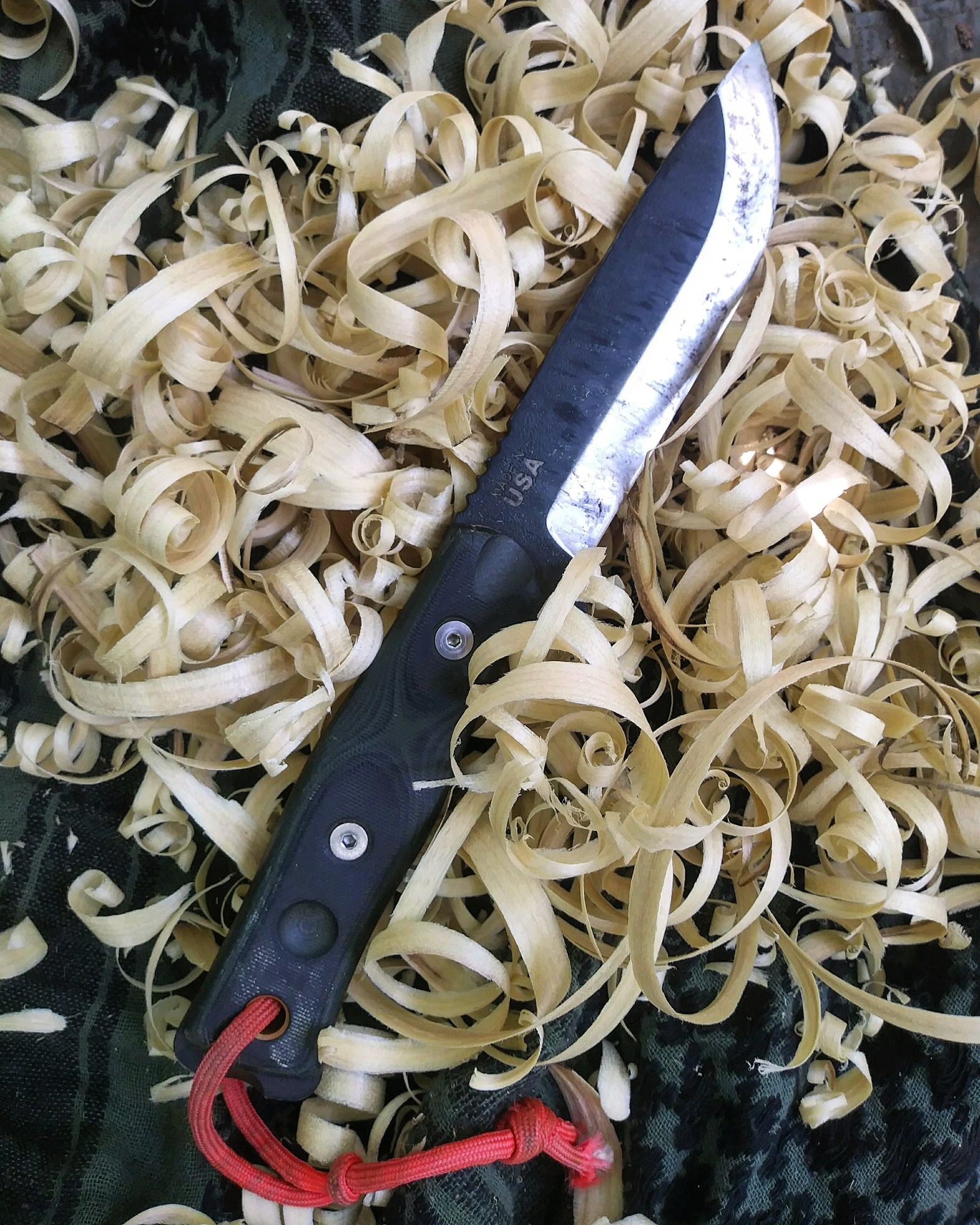“…if you’re wondering where I got the one on the right in the photo… I definitely didn’t snatch it from a candlelight Christmas Eve service, if that’s what you think. The Possum Mentality never sleeps.”
Read more#WildEdibleWednesday 11/28 - Red Oak
“Tall, strong, and regal, red oaks grow to between 100’ to 150’ tall, with trunk diameters of 3’ to 4’. Historically, oaks symbolize royalty or authority, hence the use of oak leaves in U.S. military officer’s rank insignia to this day.”
Read moreInstructor Corps Pro Tip 11/27 - Bushcraft Knife Sharpener
“But the Achilles heel of any knife is this: It gets dull. It doesn’t matter whether the blade you’re carrying is carbon, stainless, laminated, Gerber mystery metal, or a space-age super steel, it’s going to lose its edge eventually if you use it.”
Read moreInstructor Corps Pro Tip 11/13 - The Kochanski SuperShelter
“We always say that we don’t do “hacks,” and we don’t. But this is the one thing we’ve come across that truly hacks the system – it allows you to bend the laws of the woods like Neo bends space and time in the Matrix. There is no downside, and there are no compromises. Interested? Then allow us to enlighten you about the Kochanski SuperShelter.”
Read more#WildEdibleWednesday 11/7 - American Sweetgum
“If you were around SARCRAFT in the early days, you would have heard Jonathan and I refer to Sweetgum as the most useless tree in the forest, only good for making toothbrushes (which we’ll touch on in a minute.)”
Read moreInstructor Corps Pro Tip 10/23 - The Original Pocket Multi-Tool
“Today we’re going to talk about the granddaddy of all pocket multi-tools, and one that still puts most of today’s offerings to shame. We’re talking, of course, about the legendary P-38 can opener.”
Read moreInstructor Corps Pro Tip 10/16 - Laying a Fire
“If you’ve ever had a fire that started out alright, flamed up, and then quickly died, this may well be one of the reasons why.”
Read moreInstructor Corps Pro Tip 10/9 - 4 Tips for Axe Safety
“If you follow these four tips, we estimate the chances of lopping your foot off are gonna decrease by approximately 937%. Maybe not. But at least you’ll know better. Whether you do better or not is up to you. Speaking from experience, bad habits are hard to break!”
Read moreInstructor Corps Pro Tip 10/2 - Char Cloth
“One of the oldest and most time-tested of all tinders is char cloth. It’s simply cotton cloth (or nearly any other woven plant fiber, really – you can use linen, jute twine, burlap, etc.), that’s undergone the process of pyrolysis.”
Read more#WildEdibleWednesday 9/26 - American Beautyberry
“The scientists at Ole Miss who discovered callicarpenal first began their research because their grandparents had all used beautyberry leaves to repel mosquitoes. Lo and behold, they were right.”
Read moreInstructor Corps Pro Tip 9/25
“With one technique, you can use a single log to create your tinder, kindling and fuel alike. Enter the feather curl.”
Read more#WildEdibleWednesday 9/19 - Muscadine
“The bouquet is as follows: It smacks you in the face with a wallop of intense muscadine flavor followed by a wall of cane sugar, finishing with a pure alcohol burn. There are notes of pure muscadine (obviously), oak, citrus, grape Jolly Rancher, ethanol, and a hint of vinegar. The overall experience is jarring, but not at all unpleasant. I dare California to do better.”
Read moreInstructor Corps Pro Tip 9/18
Lots of people who carry knives are scared of sharpening them. In our experience, it’s mostly because they’re afraid of screwing up, so they don’t do it.
Read more#WildEdibleWednesday 9/5 - Kudzu
Although non-native and highly invasive, Kudzu has become as much a part of the South as barbecue, pecan pie, dirt track racing, and smiling and waving at random strangers.
Read more#WildEdibleWednesday 8/22 - Staghorn Sumac
Dramatic and exotic-looking with its bright red fruiting bodies, sumac is part of the Anacardiaceae family of plants that includes cashews, mangoes, and pistachios, as well as Brazilian pepper, poison ivy, and poison oak.
Read more#WildEdibleWednesday 8/8 - Mountain Mint
The power of this herb can’t be underestimated, as is evidenced by the reverence in which native Americans and pioneers alike held it. The Choctaw considered it sacred, and swore by it as a last-ditch effort to revive the dying… and even raise the dead.
Read more#WildEdibleWednesday 8/1 - Sarsaparilla
The fact that these plants are valuable as wild edibles and medicinals are evidence that God doesn’t create anything without a purpose, and that everything that grows in the forests and fields has a use… because I absolutely despise them.
Read more#WildEdibleWednesday 7/25 - Maypop Passionflower
“Before all children everywhere became locked on iPad screens, kids in the country used to have fights with green maypops. They’re a uniform shape and easy to throw accurately, and they raise a good welt if you throw them hard. They make an awesome hand grenade if you’re nine years old and have an active imagination. (I may or may not be speaking from experience.)”
Read more#WildEdibleWednesday 7/18 - Fleabane
“And all those paintings, books, and movies depicting pretty medieval peasant girls with a sprig of the daisy-like flowers tucked behind their ear or woven into crown? They were trying to keep fleas out of their hair, which was a constant problem in the Middle Ages. Attractive, right?”
Read more#WildEdibleWednesday 7/11 - Golden Chanterelle
I was hiking through Shenandoah National Park in northern Virginia and happened upon a kindly old man and his wife picking mushrooms. I asked what he was harvesting and he replied, “Chanterelles. They’re the best mushrooms in the world. You want some?”
Read more



















